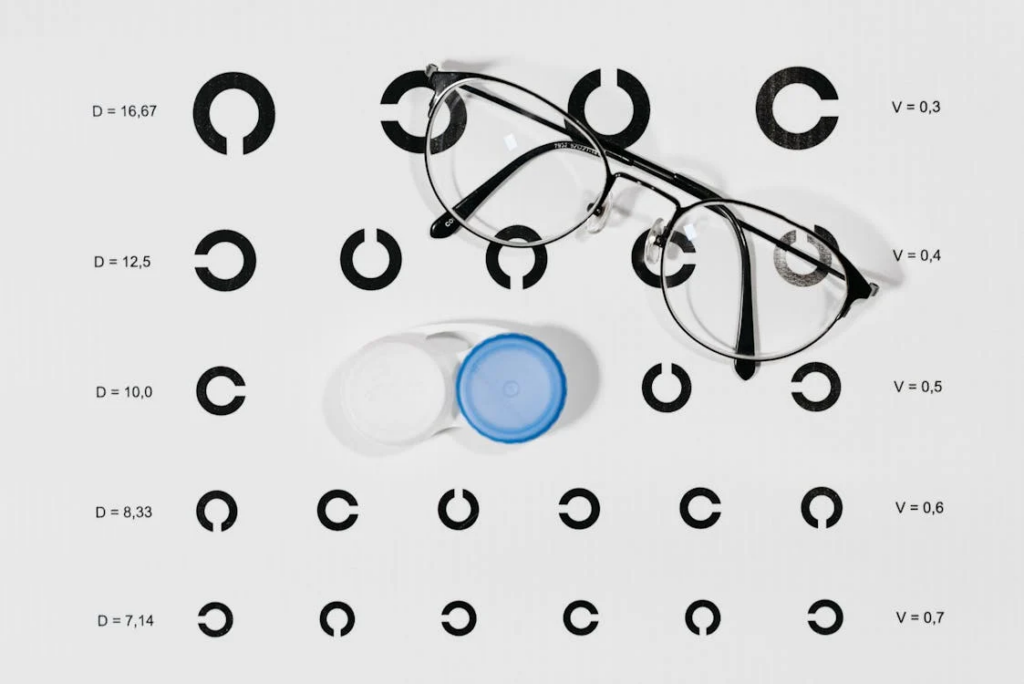Key Differences Between Nearsightedness and Farsightedness

If you’re on the journey to become an optometrist or if you’re troubled by blurry vision, grasping the contrast between nearsightedness and farsightedness is vital. These two frequently encountered refractive issues impact scores of people globally, manifesting in markedly diverse manners. Be it preparing for your tests or figuring out why the street signs seem out of focus, this blog details the scientific fundamentals and manifestations of these eye conditions.
What Does Nearsightedness Mean?
Myopia, or nearsightedness, is when far-away things look like a smudge on your glasses, but up-close stuff is crystal clear. It happens because your eye’s light focus is a bit off, landing in front of the retina instead of on it. So, reading a book? No problem. Spotting a street sign or deciphering a blackboard? Good luck.
This visual error primarily arises from an extended eyeball or an exceedingly curved cornea. Genetic factors significantly contribute; if either or both parents have myopia, the chances of their offspring getting nearsightedness are higher. Environmental aspects, such as extended exposure to digital screens or prolonged close-up tasks, are also associated with a surge in myopia cases, particularly in young adults and children. Symptoms often show up in school kids and really hit their stride during the teenage years.
Squinting at street signs? Struggling to read a menu board from afar? Or maybe those headaches are your eyes screaming, “Help!” Sounds like myopia might be crashing the party. The good news? A quick trip to the eye doctor can sort it out. Prescription glasses, contact lenses, or even laser surgery with a top-rated laser vision center in Orange County can have you seeing clearly in no time—no squinting required.
What Does Farsightedness Entail?
Unlike nearsightedness, farsightedness (a.k.a. hyperopia) flips the script. If you have hyperopia, you can spot a bird in a distant tree but struggle to read the menu right in front of you. Why? Because your eyes like to focus light behind the retina, making close-up tasks like reading or threading a needle a real challenge—and a workout for your eyes.
Unlike myopia, hyperopia happens when your eyeball is shorter than it should be or your cornea is too flat—basically, your eye skipped geometry class. While not as common as nearsightedness, hyperopia often runs in the family, proving that bad vision can be a group effort. Individuals with minor hyperopia might not exhibit noticeable symptoms as their eyes can offset the refractive issue, especially at a younger age. However, as we grow older, this natural compensation (known as accommodation) diminishes, making the symptoms more distinguishable.
Hyperopia, aka farsightedness, makes close-up work look like a blur, leaves your eyes feeling like they’ve run a marathon, and might even throw in a headache for good measure. The good news? A quick trip to the optometrist can spot it, and a pair of stylish glasses or trusty contacts will have your eyes focusing like a champ in no time.
The Differences
While myopia and hyperopia are both refractive issues, they differ greatly in their causes and impacts. Nearsightedness is due to an elongated eye, resulting in light focusing ahead of the retina. Farsightedness is caused by the contrast—a shorter eye or flatter cornea—leading to light focusing beyond the retina.
The age of onset of these conditions also varies. Myopia generally initiates in childhood and might intensify during growth periods, while hyperopia can remain unidentified for years, particularly in youngsters who can adjust for the error. With age, hyperopia becomes more noticeable as the ability to accommodate decreases.
Lastly, while both conditions have common symptoms like eye strain and headaches, the visual issues they create are essentially opposite. Myopic individuals face problems focusing on distant objects, while those with hyperopia might start to experience discomfort when doing close-up tasks, especially as they get older.
Clearer Vision Starts with Understanding
Knowing the dissimilarities between nearsightedness and farsightedness is fundamental to eye care. Both conditions can drastically impact daily life, but the encouraging news is they are easily treatable. If you have any of these symptoms, don’t hesitate—schedule an eye examination and take the initial step toward better vision today.








